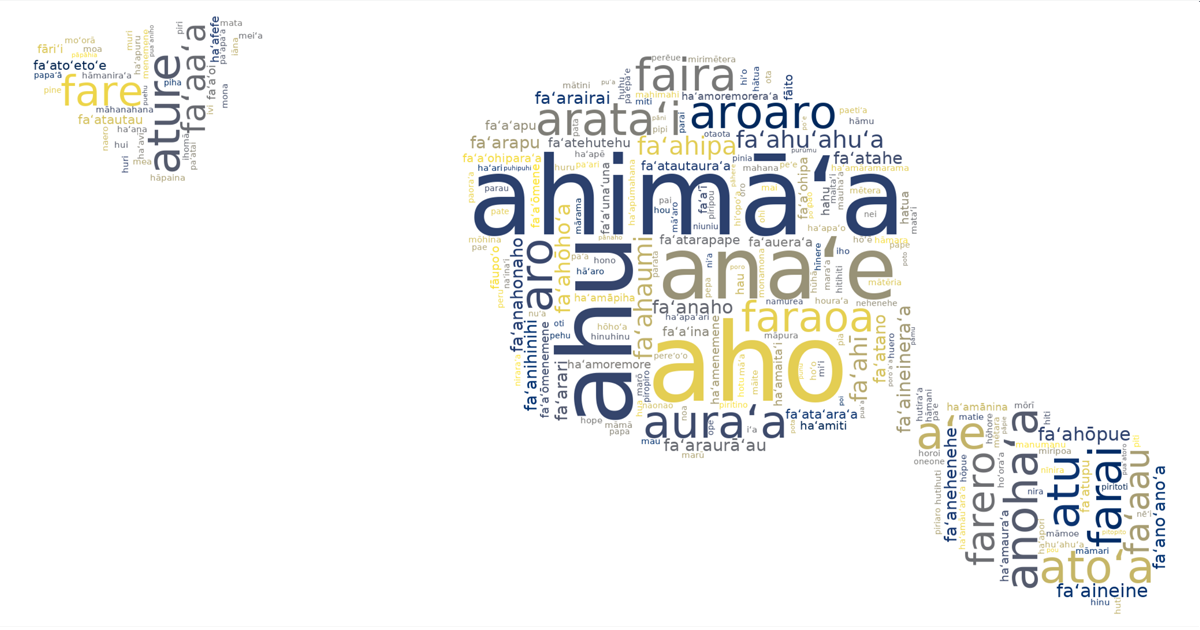
We also accept payments via Paypal
Huri Translations
Tel. +689 89 205 483
info@huri-translations.pf
PO BOX 365 Maharepa
98728 Mo'orea
French Polynesia
N°TAHITI 876649
Subscribe to our newsletter


Freshly cut rau meiʻa (banana leaves) are prepared through a specific process: they're gently waved over the glowing stones until they wilt, so as to make them pliable enough to separate the stem from the leaf blades. Sometimes, whole banana trunks are flattened into a rauai. The moist layer allows the temperature in the oven to stabilize and not overcook the food. The combination of materials creates the distinctive smoky flavor that defines traditional Tahitian cuisine.
In Yucatan, the Maya píib represents one of Mesoamerica's most enduring cooking traditions. The Maya use píibs for daily cooking, festivals, and ceremonies. They have preserved specific terminology for their earth ovens, with different names for various components and processes. The technique is particularly important for preparing sacred foods like túut iwaaj (ceremonial tamales) and pibilnalo'ob (ritual maize).
Both Pacific and Maya traditions emphasize the spiritual significance of underground cooking. In Tahiti, the ahimāʻa's earthy and smoky flavor is considered an essential element of proper food preparation, especially for traditional dishes like rūʻau, also called fāfā (young taro leaves).
For the Maya, the píib holds ceremonial importance, particularly in rituals like Ch'a chaak (rain ceremony) and Hanal pixan (meal of the spirits). The underground cooking process itself is seen as highly symbolic, as it connects to Maya cosmology and the sacred underworld.
Contemporary practitioners in both regions have found ways to modernize while maintaining essential traditions. In Tahiti, practitioners use modern or imported materials like aluminum foil, burlap and cotton tīfaifai (patchwork covers) for better sealing, while preserving traditional elements like stone selection, leaf preparation, albeit time-consuming.
Maya communities similarly adapt by incorporating new materials like blowtorches to heat the stones faster while still using fibers like ixtle, or īchtli in Nahuatl (Agave or Yucca fiber). However, in Polynesia, just like in Mesoamerica, practitioners emphasize that the distinctive flavors and body created by cooking food underground cannot be replicated by modern off-the-ground methods.
The survival of these ancient cooking methods speaks to their cultural significance. Both Tahitian and Mesoamerican communities have carefully balanced adaptation with preservation, accepting certain modern materials while maintaining core elements that define their traditional cuisines.
Perhaps most importantly, these traditions continue to serve as vehicles for cultural knowledge transmission, with specific roles for different family and community members in the preparation process. The persistence of indigenous cooking terminology in both regions demonstrates how language preserves cultural knowledge about food preparation, communal gathering, and the relationship between earth, fire and the spiritual world.

Across the Pacific and Mesoamerica, underground ovens represent one of humanity's oldest cooking technologies, with evidence dating back tens of thousands of years. Today, these traditional cooking methods persist most strongly in Polynesia and among the Maya, where they remain deeply connected to cultural identity and ceremonial life.
"the distinctive flavors and body created by cooking food underground cannot be replicated"
The Tahitian underground oven, called umu, or ahimāʻa in its modern form (literally "fire-food"), begins with a pit about three feet deep and four feet across. The process uses puru haʻari (dried coconut husks) and ʻapu haʻari (coconut shells) for kindling, with toa wood logs, today called ʻaito (ironwood) to provide the primary fuel, as this wood is denser than most available wood types. Critical to the process are the ʻōfaʻi ahimāʻa (cooking stones), which must be specifically porous basalt to prevent explosion from heat.
Underground Ovens: Ancient Traditions from the Pacific to Mesoamerica
